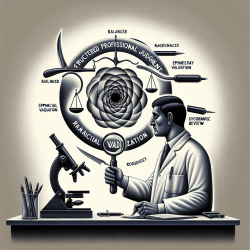Empowering Minds: Transforming Speech Therapy with tDCS
In the wake of the COVID-19 pandemic, many individuals have experienced lasting cognitive and speech-related challenges. These enduring effects, known as post-acute sequelae SARS-CoV-2 infection (PASC), have prompted researchers and clinicians to explore innovative solutions. A recent study titled TDCS in a patient with dreadlocks: Improvements in COVID-19 related verbal fluency dysfunction sheds light on the potential of transcranial direct current stimulation (tDCS) as a promising treatment for speech and language dysfunction.
tDCS is a non-invasive brain stimulation technique that has shown efficacy in improving verbal fluency. This study focuses on a 63-year-old veteran who experienced significant speech dysfluency following a severe COVID-19 infection. Despite the challenges posed by his dreadlocks, which are often considered a barrier to effective tDCS application, the study successfully demonstrated improvements in verbal fluency through adapted electrode positioning.
Key Findings and Implications for Practitioners
The study's findings are groundbreaking, particularly for practitioners in speech language pathology. Here are the key takeaways:
- Adaptability of tDCS: The study highlights the adaptability of tDCS in individuals with diverse hairstyles, such as dreadlocks. By modifying electrode placement, practitioners can ensure effective stimulation without requiring hairstyle changes.
- Improved Verbal Fluency: The patient demonstrated significant improvements in verbal fluency, producing more words and showing enhanced lexical access. This suggests that tDCS can be a valuable tool in addressing speech and language dysfunction, particularly in post-COVID-19 cases.
- Data-Driven Decisions: The study underscores the importance of monitoring electrode contact quality and outcomes. Practitioners are encouraged to adopt data-driven approaches to optimize treatment success.
Implementing tDCS in Practice
For practitioners interested in integrating tDCS into their therapy sessions, here are some practical steps:
- Education and Training: Gain a thorough understanding of tDCS technology and its application in speech therapy. Consider attending workshops or training sessions to enhance your skills.
- Equipment and Setup: Ensure you have the appropriate equipment, such as a battery-driven stimulator and premoistened sponge electrodes. Familiarize yourself with the electrode placement techniques to accommodate different hairstyles.
- Monitoring and Evaluation: Continuously monitor electrode contact quality and patient outcomes. Use validated test forms to assess verbal fluency improvements and adjust treatment protocols as needed.
Encouraging Further Research
While the study provides valuable insights, it also highlights the need for further research. Practitioners are encouraged to contribute to the growing body of knowledge by conducting studies that explore the impact of tDCS on diverse populations and speech-related challenges.
By embracing innovative approaches like tDCS, practitioners can play a pivotal role in transforming speech therapy outcomes for children and adults alike. The potential to enhance verbal fluency and address COVID-19-related speech dysfunction is a testament to the power of data-driven decisions and evidence-based practices.
To read the original research paper, please follow this link: TDCS in a patient with dreadlocks: Improvements in COVID-19 related verbal fluency dysfunction.










